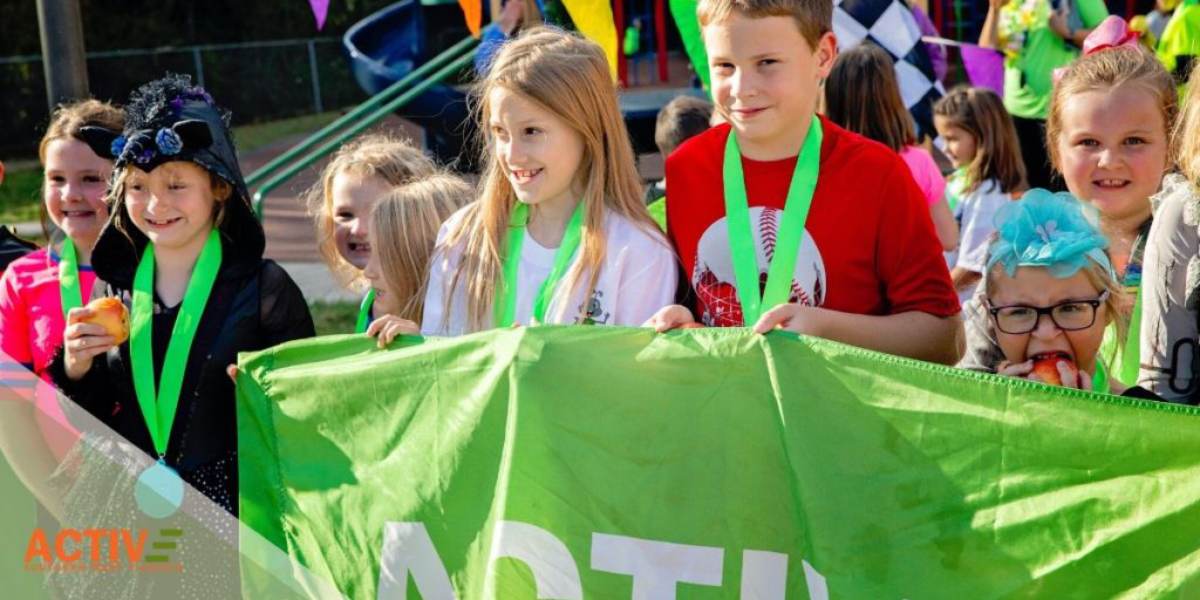
At the beginning and end of each Kids Run Club season, youth participants fill out a pre and post survey answering questions about their activity levels, daily screen time, and confidence in their ability to be physically active. The collective survey data is analysed at the WVU School of Public Health to determine what changes occurred for each child over the 6-8 weeks of Run Club. We got some great results in 2019! Survey data indicates that many kids increased their physical activity levels, decreased their screen time, and felt more confident in their ability to be physically active every day.
Check out some of the cool results from the 2019 spring and fall Kids Run Club seasons! (Note: data marked with ‘*’ is statistically significant information).
1. Physical Activity
The CDC recommends that every child engages in 60 minutes of physical activity a day, 7 days a week to stay healthy and build up their heart and lungs. Participating in a Kids Run Club can help a child increase their daily physical activity and help them reach this goal! Data from the surveys revealed that *by the end of the program, the number of participants who achieved the recommended 60 minutes of physical activity a day increased from 29.5% up to 35.9%, which is a 6.4% increase!
The jump was even higher for kids who were participating in their first ever Kids Run Club. *At the beginning of the season, only 29% of that group had achieved the 60 minutes of daily activity. But by the end of the program, 38.6% of the first time Kids Run Club kids had reached that goal. This is a 9.6% increase in the percentage of new Kids Run Club participants who increased their activity levels to meet the CDC guidelines.
*For children who had participated in a Kids Run Club before, the percentage who met the recommended 2 or fewer hours of daily screen time increased from 38.5% up to 45.7% of kids
2. Screen Time
Our 2019 Kids Run Club survey data also shows that over the course of the season, some kids decrease the amount of time they spend watching tv, playing video games, and/or doing other other screen related activities. We found that *by the end of the program, kids’ average daily screen time decreased from 3.7 hours a day down to 3.3 hours a day. This decrease is equal to about 22 whole minutes – think about all the cool activities you can do in 22 minutes! And it’s not just the hours of daily screen time that we saw change – the percentage of kids who achieved the recommended 2 hours or less of daily screen time changed as well. *At the end of the season, 49.7% of kids met this screen time recommendation compared with only 43.3% who met it at the start of the season.
3. Other Findings
Kids Run Clubs work to instill kids with confidence in their ability to be physically active. It’s this confidence that can help a kid keep their activity levels up even after the Club is over, which can lead to a longer and healthier life. According to the 2019 participant survey data, by the end of the program 66.2% of kids said that they were confident in their ability to be active for 60 minutes a day, 7 days a week. This number of confident kids is up from the beginning of the season, when only 60.6% of kids thought they could be active for that amount of time.
The post season survey also asks kids if they have gotten a friend or family member to be physically active over the course of the Kids Run Club season. 70% of kids indicated that they had, which shows that the benefits of the program reach beyond just the youth participants.
4. What’s Next?
The Kids Run Club program is great for kids and the community! Spring 2020 Kids Run Clubs are due to start in April, and we’re gearing up for an awesome season. You can help us reach more children by Volunteering to be a Kids Run Club coach, or by supporting the program in one of these other ways.


